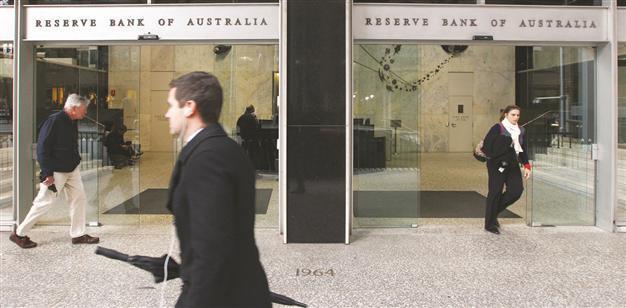Australia cuts key interest rate due to global worries
CANBERRA - The Associated Press

People walk past the Reserve Bank of Australia in Sydney. Australia’s central bank has cut its benchmark interest rate for a second consecutive month. AP photo
Australia’s central bank yesterday cut its benchmark interest rate for a second consecutive month as Europe’s economy weakens and growth in China moderates.The Reserve Bank of Australia’s board said it lowered the rate by a quarter percentage point to 3.5 percent.
The central bank last month cut the rate by a larger-than-expected half point amid a slump in the housing market and lackluster growth in the nation’s economy outside the booming mining sector.
Treasurer Wayne Swan said he remained confident that Chinese growth would be strong enough to realize Australia’s growth forecasts.
A boom in the Australian mining industry is forecast to lift economic growth from 3 percent in the current fiscal year ending June 30 to 3.25 percent next year.
“Ultimately we’re not completely immune from events in Europe, but we are in the best part of the world at the right time,” he said.
Australia’s benchmark lending rate was slashed to 3 percent in 2009 as the economy weathered the global financial crisis without sinking into recession thanks to Chinese demand for raw materials such as iron ore and coal. The rate was then increased, reaching 4.75 percent in November 2010 before volatile global conditions again began weighing on the Australian economy.
Commonwealth Bank chief economist Michael Blythe said the central bank’s decision to cut the rate by a quarter point rather than the half point that markets had expected suggested it was “keeping its powder dry” in case the European situation worsened.
“If something really does go wrong in Europe, then you want the ability to move very aggressively, like we did a few years ago,” he said.
Swan said the central bank’s decision reflected his government’s commitment detailed in May to return Australia’s budget to surplus in the new fiscal year. Continuing to run a deficit would stimulate the economy, possibly limiting the central bank’s ability to lower interest rates without sparking higher inflation.
Australia’s net debt is forecast to peak in the current fiscal year at 142.5 billion Australian dollars ($139.4 billion) or about 9.6 percent of GDP, which is a fraction of the debt levels of most developed countries.
















